Mountain Caribou
Perhaps the most newsworthy animal in the vicinity of Kootenay Lake is the Mountain Caribou. The high ground of the Selkirks, south of the West Arm and west of the South Arm, is home to the most southerly herd of caribou (or reindeer) in the world.
The caribou of North America and the reindeer of Eurasia are the same species—they could interbreed. Yet, there are some physical differences which accompany the name change between continents: the caribou are somewhat larger and shyer than the long semi-domesticated reindeer. Both reindeer and caribou are divided into various subspecies, those in British Columbia are all Woodland Caribou. Within Woodland Caribou are three different ecotypes (varieties) distinguished primarily by variations in habitat and feeding behavior. The ecotype adjacent to Kootenay Lake is the Mountain Caribou.
As with other members of the deer family (cervid), caribou have antlers, but they are unusual in that it is a feature of both sexes. Yet, as antlers are grown and shed each year at various times, they can provide some insight as to sex and age. Old bulls shed their antlers first: Theirs are dropped in November and December following October’s rutting. Younger bulls, up to three years old, keep their antlers until March or April. Cows keep theirs until after they have calved in early June. Cows that are not pregnant drop their antlers in April and May. Through the summer the antlers of both sexes are grown again.
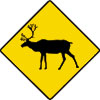 A roadside sign warning of caribou. It shows the large antlers of the male during rutting season.
A roadside sign warning of caribou. It shows the large antlers of the male during rutting season.
Mountain Caribou are found throughout the Interior Wet Belt, the deep-snowpack mountains of southeastern British Columbia within which is found Kootenay Lake. In the winter, these herbivores eat arboreal hair lichen almost solely; farther north, other ecotypes eat terrestrial lichens primarily. Further, unlike their norther relatives, Mountain Caribou don’t travel great horizontal distances, but change elevation with the seasons. They are often found between the elevations of about 1500 to 2100 meters. All the pictures, below, were taken near the middle of that range, along Kootenay Pass.
In the last century, the range of the Mountain Caribou has shrunk, and our south Selkirk herd has diminished to about three dozen members. It is now Red Listed: it is in danger of vanishing. Consequently, a number of organizations are working hard to persuade the Provincial Government that efforts must be made to preserve the herd. Among them is the Mountain Caribou Project.
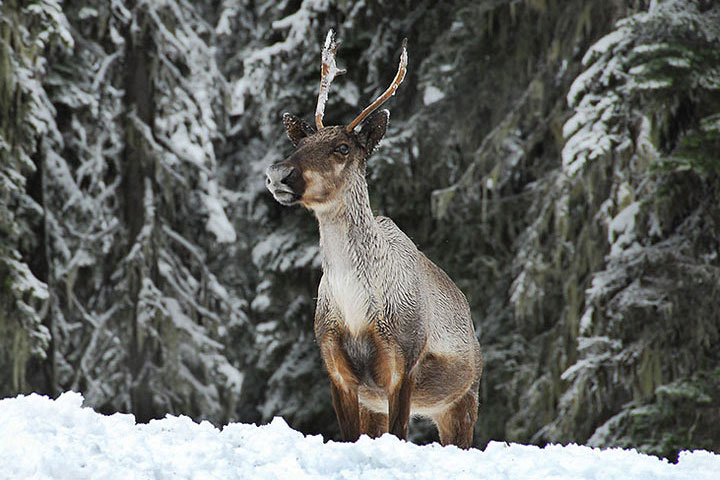
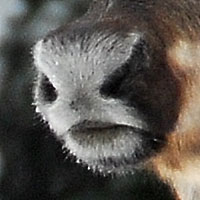 A Mountain Caribou has many adaptations for the cold and snow. Even its nose is covered in fur.
A Mountain Caribou has many adaptations for the cold and snow. Even its nose is covered in fur.
Both male and female caribou grow and shed antlers annually. It is April and this female still wears last year’s antlers.
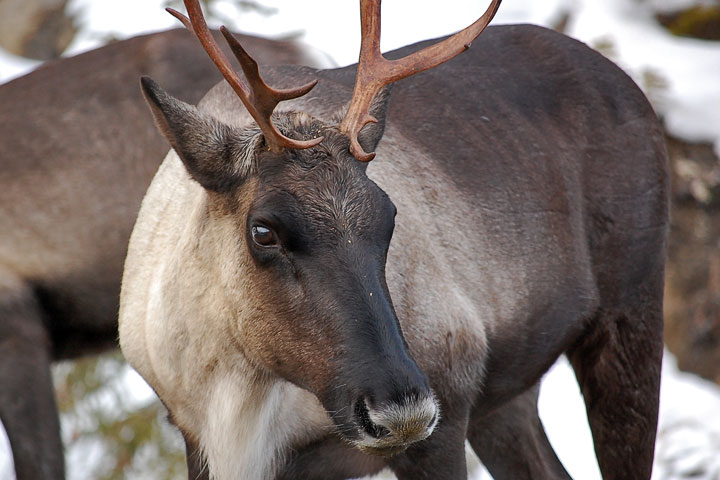 The Mountain Caribou is easily distinguished from its local cervid relatives: moose, elk, white-tailed deer, and mule deer. The caribou has a dark face, light shoulders and a fir–covered nose.
The Mountain Caribou is easily distinguished from its local cervid relatives: moose, elk, white-tailed deer, and mule deer. The caribou has a dark face, light shoulders and a fir–covered nose.  Derek Marcoux
Derek Marcoux
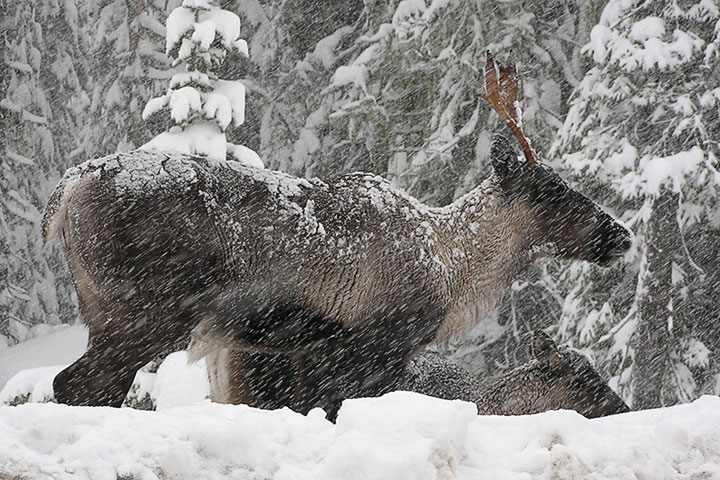 This is the first heavy snow of the winter. Deep snow works to the advantage of the Mountain Caribou by lifting them within reach of their favoured lichen hanging from the trees. Meanwhile, predators remain at lower elevations seeking out prey not as deft in the deep snows.
This is the first heavy snow of the winter. Deep snow works to the advantage of the Mountain Caribou by lifting them within reach of their favoured lichen hanging from the trees. Meanwhile, predators remain at lower elevations seeking out prey not as deft in the deep snows.  Doug Thorburn.
Doug Thorburn.
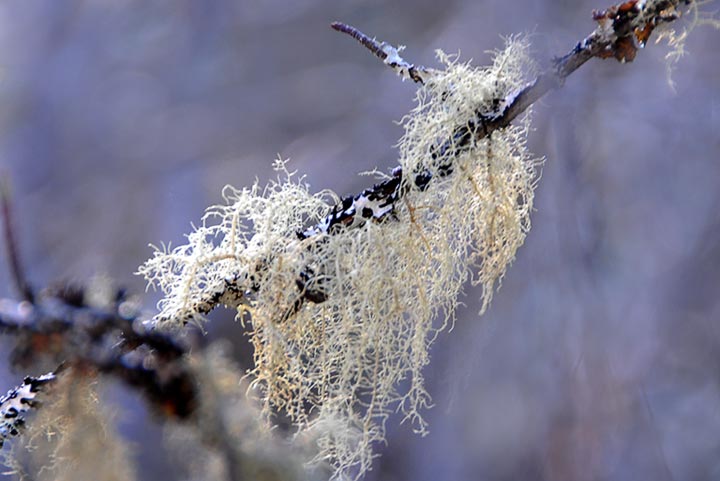 The arboreal lichen is a favourite food of the mountain caribou.
The arboreal lichen is a favourite food of the mountain caribou.
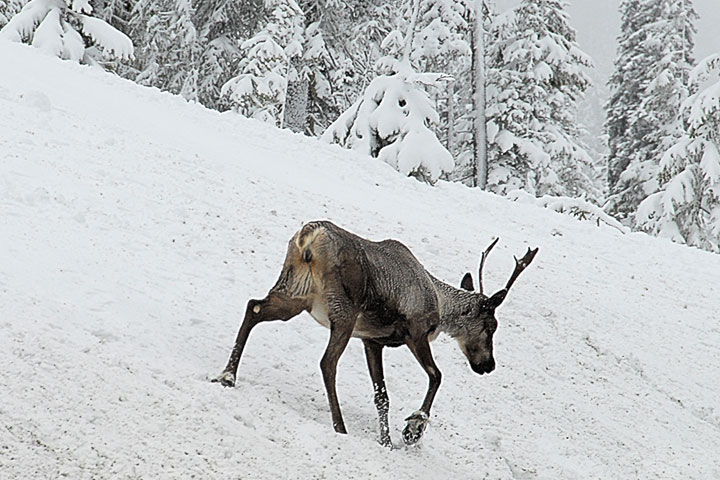
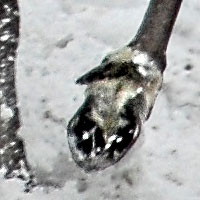 Mountain Caribou are much better adapted to travelling through deep snow than are other members of the deer family—they have large crescent-shaped hooves and large dewclaws set well back on the foot. These enable them to forage in the deep snows of the high-mountain winter, and doing so, escape many predators.
Mountain Caribou are much better adapted to travelling through deep snow than are other members of the deer family—they have large crescent-shaped hooves and large dewclaws set well back on the foot. These enable them to forage in the deep snows of the high-mountain winter, and doing so, escape many predators.
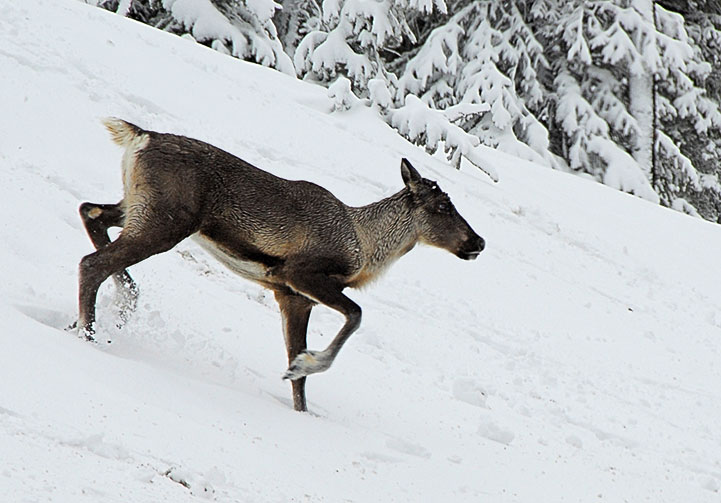 By the end of April, males, both young and old have shed their antlers. The large size of the hoof is evident from the side.
By the end of April, males, both young and old have shed their antlers. The large size of the hoof is evident from the side.
 It is late March—the time when young bulls drop their antlers (older bulls lost theirs at the end of the previous year). My guess is that the foreground and uphill animals are both young males; the uphill caribou has already shed one antler.
It is late March—the time when young bulls drop their antlers (older bulls lost theirs at the end of the previous year). My guess is that the foreground and uphill animals are both young males; the uphill caribou has already shed one antler. Rob Burrows.
Rob Burrows.
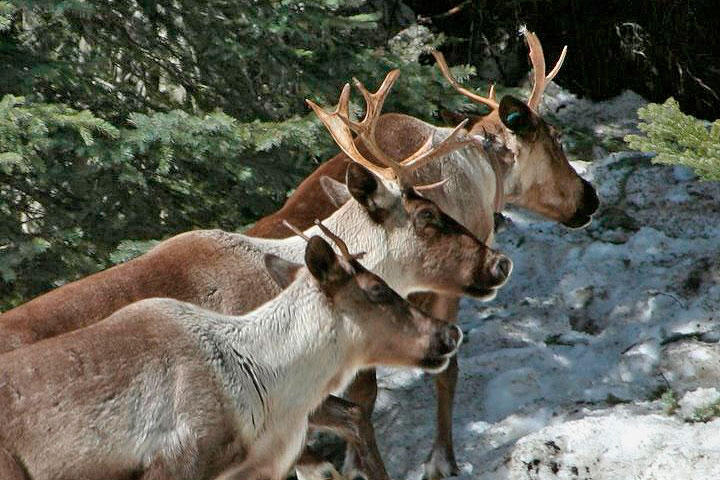 Mountain Caribou in late March on Kootenay Pass.
Mountain Caribou in late March on Kootenay Pass.  Rob Burrows.
Rob Burrows.
There is a wealth of information available on the Mountain Caribou:
 Mountain Caribou is a good summary from the BC Wildlife Branch;
Mountain Caribou is a good summary from the BC Wildlife Branch;
 Strategy for Recovery of Mountain Caribou in BC by Mountain Caribou Technical Advisory Committee;
Strategy for Recovery of Mountain Caribou in BC by Mountain Caribou Technical Advisory Committee;
 Caribou discusses all of BC’s Caribou ecotypes;
Caribou discusses all of BC’s Caribou ecotypes;
 Strategy For Mountain Caribou is an American look at the South Selkirk herd;
Strategy For Mountain Caribou is an American look at the South Selkirk herd;
 Mountain Caribou Compendium from the Columbia Mountains Institute categorizes many reports.
Mountain Caribou Compendium from the Columbia Mountains Institute categorizes many reports.
![]()